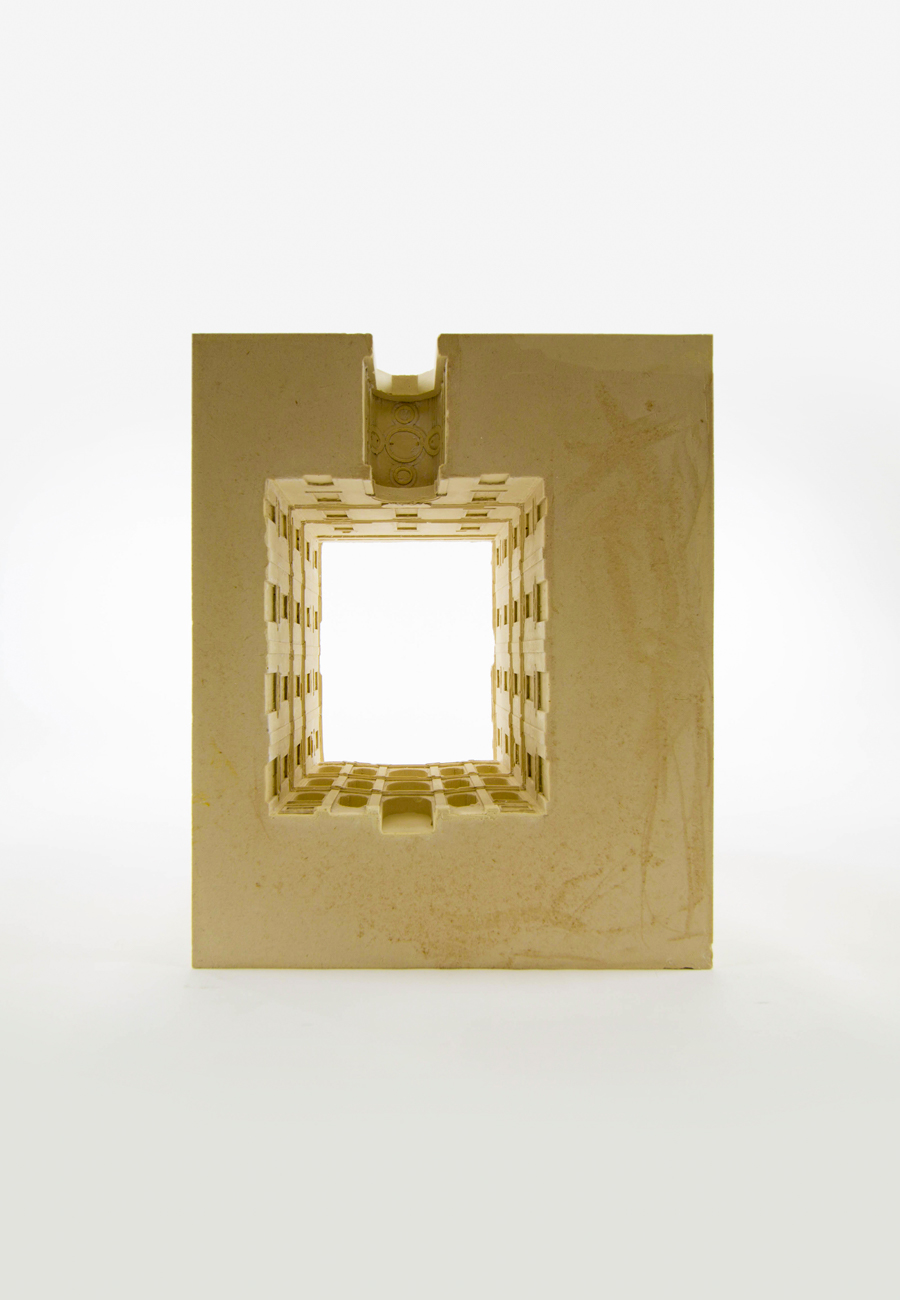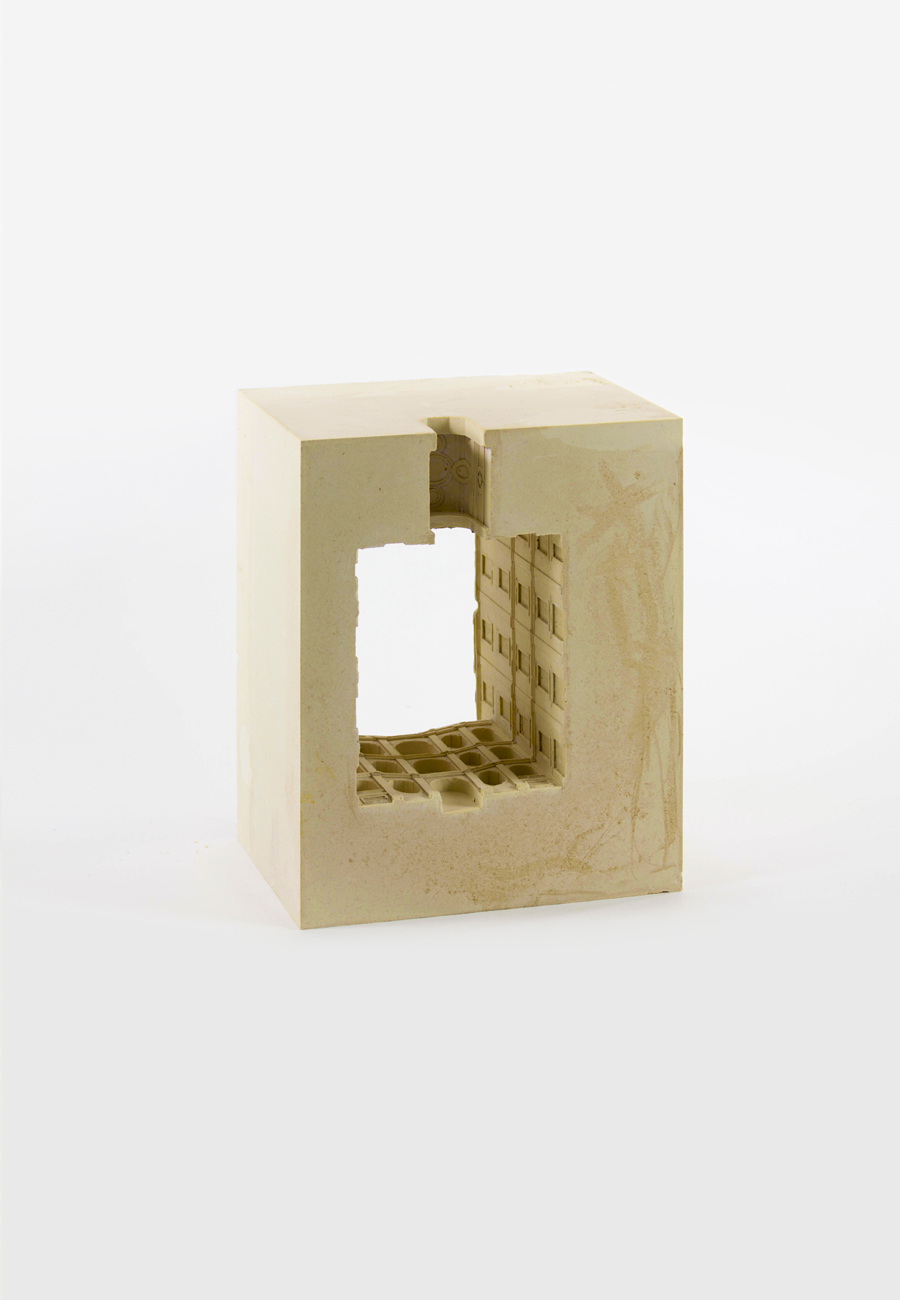

One of the first, and awe-inspiring, staircases by Ferdinando Sanfelice was built for himself: Palazzo Sanfelice was raised in 1728 along via Sanità, in the expanding Vergini quarter, just north of the old city walls. The palace was realized upon the remnants of an existing structure, from which it inherited its unconventional layout. Although a single property, it developed around two adjacent courtyards, each with direct access from the street. Along via Sanità the palazzo presents a uniform nine-bay elevation, in which the gateway portals occupy the third and seventh bays, yet inside the two courtyards almost stand as opposites.
As in other tall buildings on closely packed central Neapolitan sites, several apartments of basically equal status were stacked one on top of the other. Often it was the actual second floor that was regarded as the actual piano nobile: owing to the narrowness of the streets, it offered better light conditions. Such buildings, originating in the custom of living together in the ramifications of family clans, were now being built as leased property with flats that could be rented individually. Ferdinando Sanfelice himself occupied an upper piano nobile entered from the large, right-hand courtyard, while renting out the other floors of the building. A similar piano nobile apartment was accessed through the smaller courtyard on the left, to which we will return later.
Sanfelice’s key design decision is the positioning of the staircase at the very end of the courtyard and its elaboration as a monumental backdrop for it, in direct evidence from the street. Advancing compositional and structural arrangements of vernacular Neapolitan traditions—the first open staircase being typically attributed to the fifteenth-century Palazzo Petrucci on piazza San Domenico—he developed an innovative solution for the staircase of the multi-floored residential town palace turned apartment building. As Anthony Blunt observed, it was concurrently an intelligent response to the increasing importance attached to the idea of ‘reception’ in palaces for the nobility all across Europe. And indeed, as argued by Fabrizio Ballabio, “by occupying the rear, a far wider array of display rooms could be laid out between the doorway of the apartments and the gran salone (located on the front of the palace facing the main street).”¹ Compared to the Palazzo Serra di Cassano, Sanfelice was now realizing a much more modest programme of aristocratic apartments, yet the carefully choreographed grand promenade leading from the palazzo’s street-side entrance up to the individual apartments was as ceremonial a route as in the much more grandiose earlier Baroque palaces.
The most imposing of the two main staircases of Palazzo Sanfelice is the one in the right-hand courtyard, the larger of the two, through which Ferdinando’s own apartments are accessed. This staircase voraciously takes up all 15 metres of the cortile’s rear wing. From all conceivable staircase types, the architect chose the one that required most space: an axially symmetric arrangement that is in fact two stairs of four flights each. They turn in opposite directions to each other and come together for the last central flight of the four. This sequence is repeated through all floors.
Seen in plan, this rectangular layout looks deceivingly classical, even uneventful. Yet, standing in the court yard, the visitor is stunned by the dynamic, open machinery of flights ascending right and left in two layers of opposing diagonals. Indeed: front and rear walls are practically reduced to skeletons and leave open, in the first layer, large oblique arcades, and in the second one, strangely warped and rounded rectangular apertures. Through these layers the rear flights appear, ascending from opposite corners and opposing, or counterbalancing, the more evident ones in the front. The contre-jour effect, with light filtering in from the back garden, adds to the strangeness and mystery of the elevation. The overall impact of the structure has been likened, by Sanfelice’s contemporary biographer Bernardo de Dominici, to three pairs of gull’s wings.² But it may as well witness to Sanfelice’s familiarity with Caramuel’s architectura obliqua.³
Grandiose, dramatic and theatrical, the whole structure is nevertheless treated as something that is to serve a useful purpose. It is entirely functional in its distribution to the various apartments. The structure shows muscle and vigour and is devoid of the figurative trimmings that will often be crucial to stairs built in the following years by other architects. That is the case, for instance, of the very similar, yet more elaborately decorated stairs of Palazzo dello Spagnuolo (1738), in the nearby via Vergini. These have often been attributed to Sanfelice himself, yet their construction was executed to the engineer Francesco Attanasio, with stucco decorations by Aniello Prezioso. Other examples of more decorated staircases are at Palazzo Fernandez, in via S. Giuseppe dei Nudi, and at Palazzo Trabucco.
1. Ballabio 2014: 115.
2. Bernardo De Dominici, Vite de’ pittori, scultori, ed architetti napoletani, 3 vols. Napoli, 1742-45; III, pp. 639-659.
3. See, on this argument: Fulvio Lenzo, Ferdinando Sanfelice e l’”Architettura obliqua” di Caramuel, in: Giovanna Curcio, Marco Nobile, Aurora Scotti Tosini (eds.), I libri e l’ingegno. Studi sulla biblioteca dell’architetto (XV-XX secolo). Palermo, Caracol, 2010; pp. 102-107.